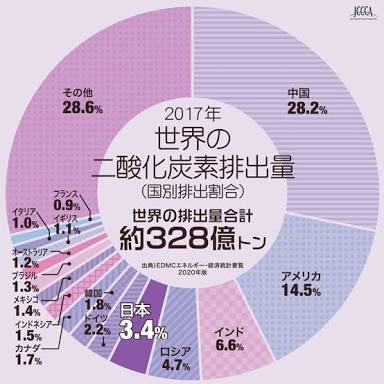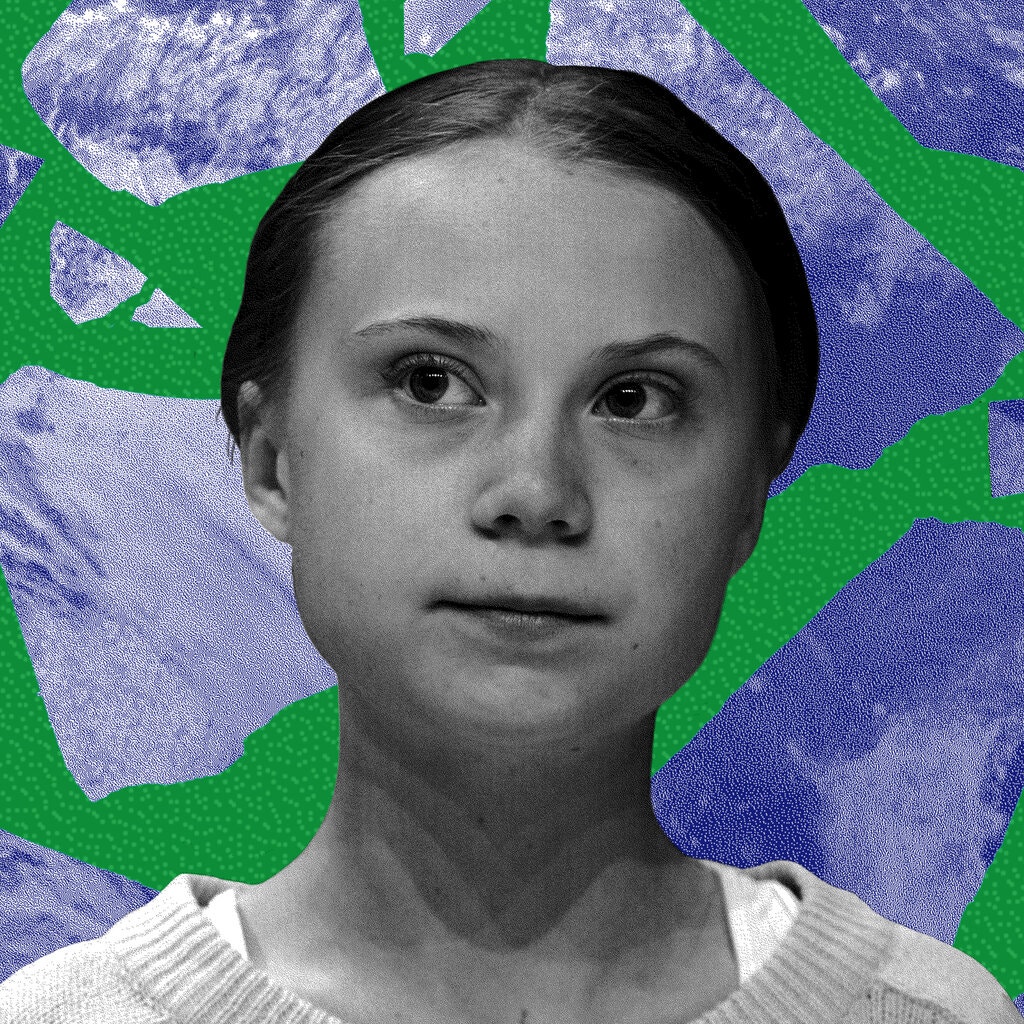NewYork Times に載せたグレタさんの記事の前文とその訳を載せます。
このグレタさんの内容の中で、明らかにおかしいのは、日本を入れていることです。
2017年、世界の二酸化炭素排出量の328億トンの内訳は次の通りです。
中国 28.2%
アメリカ 14.5%
インド 6.6%
ロシア 4.7%
日本 3.4%
ドイツ 2.2%
韓国 1.8%
カナダ 1.7%
グレタさんは、中国、アメリカ、ロシア、日本を含めるトップ10が、世界の70%を占めると述べていますが、元凶は中国に間違いないでしょう。子供の論点にすぎないと思われても仕方ないと思われます。彼女もインフルエンサー、言動発言には注意してもらいたいです。
それとも、よく言われていることではありますが、誰か大人がバックで彼女を操っているのかもしれませんが……….
This Is the World Being Left to Us by Adults
Opinion | After Greta Thunberg’s Strike, Adults Are Still Failing Children on Climate Change – The New York Times (nytimes.com)
Last week, some of the world’s leading climate change scientists confirmed that humans are making irreversible changes to our planet and extreme weather will only become more severe. This news is a “code red for humanity,” said the United Nations secretary general.
It is — but young people like us have been sounding this alarm for years. You just haven’t listened.
On Aug. 20, 2018, one child staged a lone protest outside the Swedish Parliament, expecting to stay for three weeks. Tomorrow we will mark three years since Greta Thunberg’s strike. Even earlier, brave young people from around the world spoke out about the climate crisis in their communities. And today, millions of children and young people have united in a movement with one voice, demanding that decision makers do the work necessary to save our planet from the unprecedented heat waves, massive floods and vast wildfires we are increasingly witnessing. Our protest will not end until the inaction does.
For children and young people, climate change is the single greatest threat to our futures. We are the ones who will have to clean up the mess you adults have made, and we are the ones who are more likely to suffer now. Children are more vulnerable than adults to the dangerous weather events, diseases and other harms caused by climate change, which is why a new analysis released Friday by UNICEF is so important.
The Children’s Climate Risk Index provides the first comprehensive view of where and how this crisis affects children. It ranks countries based on children’s exposure to climate and environmental shocks, as well as their underlying vulnerability to those shocks.
It finds that virtually every child on the planet is exposed to at least one climate or environmental hazard right now. A staggering 850 million, about a third of all the world’s children, are exposed to four or more climate or environmental hazards, including heat waves, cyclones, air pollution, flooding or water scarcity. A billion children, nearly half the children in the world, live in “extremely high risk” countries, the UNICEF researchers report.
This is the world being left to us. But there is still time to change our climate future. Around the world, our movement of young activists continues to grow.
In Bangladesh, Tahsin Uddin, 23, saw the impacts of climate change in his village and other coastal areas and was moved to action. He is passionate about climate education and has created a network of young journalists and educators to spread awareness, all while organizing cleanups of waterways teeming with plastic waste pollution.
In the Philippines, Mitzi Jonelle Tan, 23, has had to complete her homework by candlelight as typhoons raged outside and wiped out her community’s electricity. She told us there were times she was afraid of drowning in her own bedroom as water flooded in. Now she is leading youth in her country to respond to the aftermath of those typhoons and other hazards through sharing food, water, clothes and support with the most affected communities.
In Zimbabwe, Nkosi Nyathi, 18, is worried about a potential food crisis if weather patterns continue. Heat waves made school a challenging experience for him and his peers. Now he speaks to leaders from around the world to demand the inclusion of young people in decisions that affect their future.
The fundamental goal of the adults in any society is to protect their young and do everything they can to leave a better world than the one they inherited. The current generation of adults, and those that came before, are failing at a global scale.
The Children’s Climate Risk Index reveals a disturbing global inequity when it comes to the worst effects of climate change. Thirty-three countries, including the Central African Republic, Chad, Nigeria and Guinea, are considered extremely high-risk for children, but those countries collectively emit just 9 percent of global carbon dioxide emissions.
The 10 countries with the highest emissions, including China, the United States, Russia and Japan, collectively account for nearly 70 percent of global emissions. And children in those higher-emitting states face lower risks: Only one of these countries, India, is ranked as extremely high-risk in the UNICEF report.
Many higher-risk countries are poorer nations from the global south, and it’s there that people will be most impacted, despite contributing the least to the problem. We will not allow industrialized countries to duck responsibility for the suffering of children in other parts of the world. Governments, industry and the rest of the international community must work together to reduce greenhouse gas emissions, as 195 nations committed to do in the Paris Climate Agreement of 2015.
We have less than 100 days until the U.N. Climate Change Conference, also known as COP26, in Glasgow. The world’s climate scientists have made it clear that the time is now — we must act urgently to avoid the worst possible consequences. The world’s young people stand with the scientists and will continue to sound the alarm.
We are in a crisis of crises. A pollution crisis. A climate crisis. A children’s rights crisis. We will not allow the world to look away.

先週、世界有数の気候変動学者たちが、人間が地球に不可逆的な変化をもたらしており、異常気象はさらに深刻化するだろうと確認しました。このニュースは、国連事務総長が「人類にとってのコードレッド」と述べたとおりです。
しかし、私たちのような若者は何年も前からこの警報を鳴らしてきました。耳を傾けていないだけなのです。
2018年8月20日、1人の子どもがスウェーデン議会の外で、3週間滞在することを想定した単独の抗議活動を行いました。明日でグレタ・トゥンベリのストライキから3年が経ちます。それ以前にも、世界中の勇敢な若者たちが、自分たちのコミュニティで気候危機について声を上げました。そして今日、何百万人もの子どもたちや若者が声をひとつにして運動に参加し、私たちがますます目の当たりにしている前代未聞の熱波、大規模な洪水、広大な山火事から地球を救うために必要な作業を意思決定者に要求しています。私たちの抗議活動は、不作為が行われるまで終わりません。
子どもたちや若者にとって、気候変動は私たちの未来に対する唯一最大の脅威です。あなた方大人が作った混乱の後始末をしなければならないのは私たちであり、今、より多くの被害を受けているのも私たちなのです。気候変動によって引き起こされる危険な気象現象や病気、その他の害に対して、子どもたちは大人よりも弱い立場にあります。だからこそ、ユニセフが金曜日に発表した新しい分析結果は非常に重要なのです。
Children’s Climate Risk Index は、気候変動が子どもたちにどのような影響を与えているかを初めて包括的に示したものです。この指標は、子どもたちが気候変動や環境ショックにさらされているかどうか、また、それらのショックに対する子どもたちの潜在的な脆弱性に基づいて各国をランク付けしています。
その結果、地球上のほぼすべての子どもたちが、今現在、少なくとも1つの気候変動や環境破壊の影響を受けていることがわかりました。また、熱波、サイクロン、大気汚染、洪水、水不足など、4つ以上の気候・環境災害にさらされている子どもは、全世界の子どもたちの約3分の1にあたる8億5,000万人にものぼります。また、10億人の子どもたち、つまり世界の子どもたちの半数近くが、「極めてリスクの高い」国に住んでいると、ユニセフの研究者たちは報告しています。
これが、私たちに残された世界です。しかし、気候変動の未来を変えるには、まだ時間があります。世界各地で、若い活動家たちの動きが活発化しています。
バングラデシュのTahsin Uddinさん(23歳)は、自分の村やその他の沿岸地域で気候変動の影響を目の当たりにし、行動を起こしました。彼は気候変動教育に熱心で、若いジャーナリストや教育者のネットワークを作り、プラスチック廃棄物で汚染された水路の清掃活動を行いながら、意識の向上に努めています。
フィリピンのミッツィ・ジョネル・タンさん(23歳)は、外で台風が猛威を振るい、地域の電気がなくなってしまったため、ろうそくの明かりで宿題をしなければなりませんでした。寝室に水があふれて溺れそうになったこともあったそうです。現在、彼女は自国の若者を率いて、台風やその他の災害に対応し、最も被害を受けたコミュニティに食料、水、衣服、支援を提供しています。
ジンバブエのNkosi Nyathiさん(18歳)は、このままの天候では食糧危機に陥る可能性があると心配しています。熱波の影響で、彼と彼の仲間たちは学校で厳しい経験をしました。現在、彼は世界中のリーダーたちと話し、自分たちの将来に影響を与える決定に若者を参加させることを求めています。
どのような社会においても、大人たちの基本的な目標は、若者を守り、自分たちが受け継いだ世界よりも良い世界を残すためにできる限りのことをすることです。現世代の大人たち、そしてそれ以前の大人たちは、世界規模で失敗しています。
Children’s Climate Risk Indexは、気候変動の最悪の影響を受けることになる世界的な不公平を明らかにしています。中央アフリカ共和国、チャド、ナイジェリア、ギニアなど33カ国が、子どもたちにとって非常にリスクの高い国とされていますが、これらの国の合計排出量は、世界の二酸化炭素排出量のわずか9%にすぎません。
一方、中国、米国、ロシア、日本を含む排出量の多い10カ国の合計排出量は、全世界の排出量の約70%を占めています。そして、これらの排出量の多い国の子どもたちは、より低いリスクに直面しています。ユニセフの報告書で「非常にリスクが高い」とされているのは、これらの国のうちインド1カ国だけです。
リスクの高い国の多くは、南半球の貧しい国々であり、問題への貢献度が最も低いにもかかわらず、人々が最も大きな影響を受けることになります。私たちは、先進国が世界の他の地域の子どもたちの苦しみの責任を逃れることを許しません。政府、産業界、その他の国際社会は、2015年のパリ気候協定で195カ国が約束したように、温室効果ガスの排出量を削減するために協力しなければなりません。
グラスゴーで開催される国連気候変動会議(通称COP26)まで、あと100日を切りました。世界の気候科学者たちは、「今こそ、最悪の結果を避けるために、緊急に行動しなければならない」と明言しています。世界の若者たちは、科学者たちに賛同し、これからも警鐘を鳴らし続けます。
私たちは今、危機の危機にさらされています。汚染の危機。気候の危機。子どもの権利の危機です。私たちは、世界が目をそらすことを許しません。(拙訳)












コメント